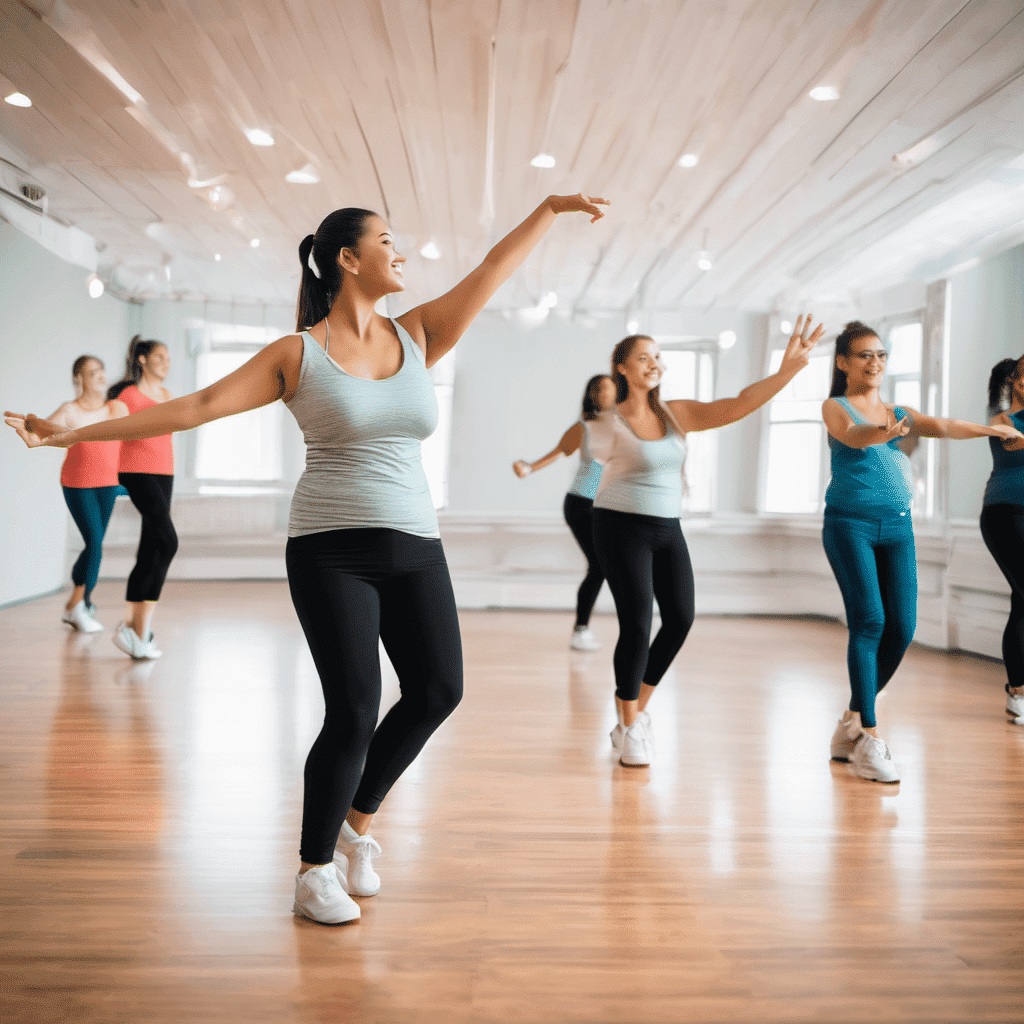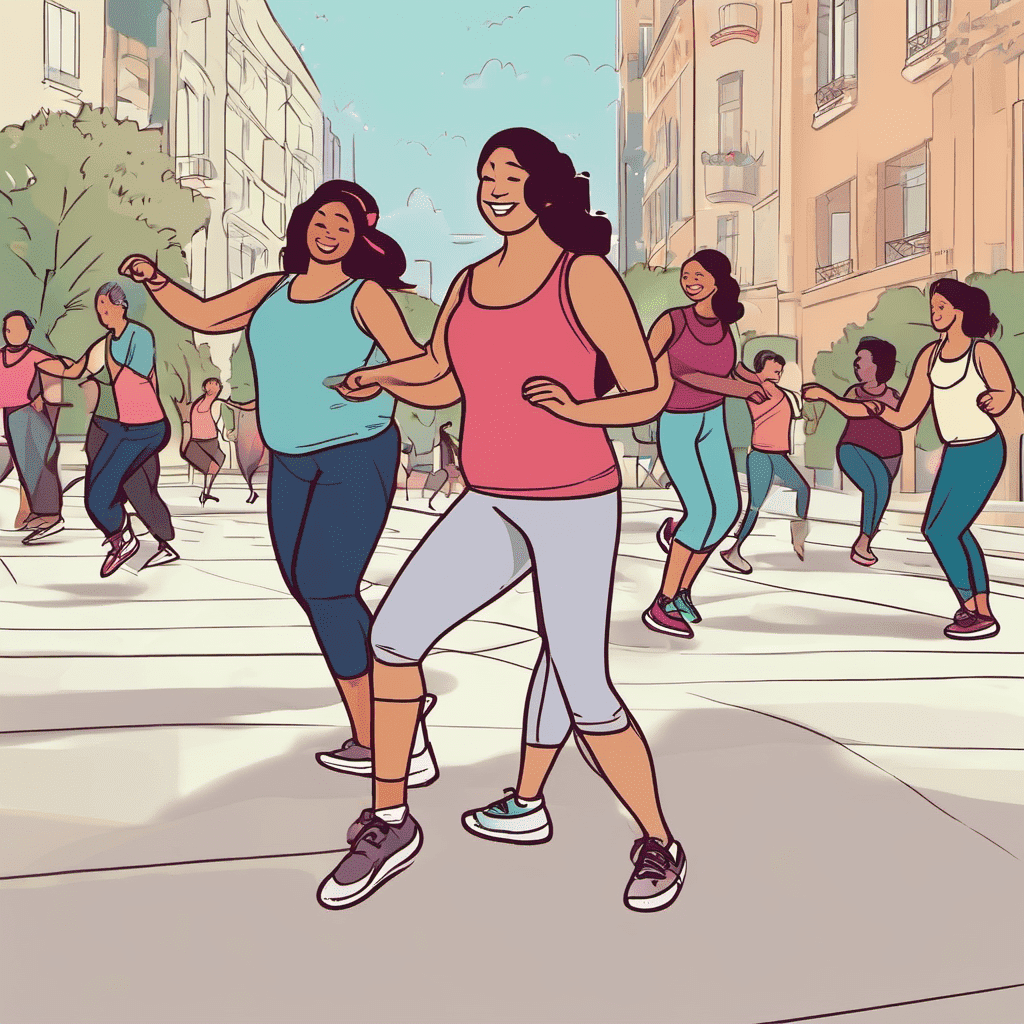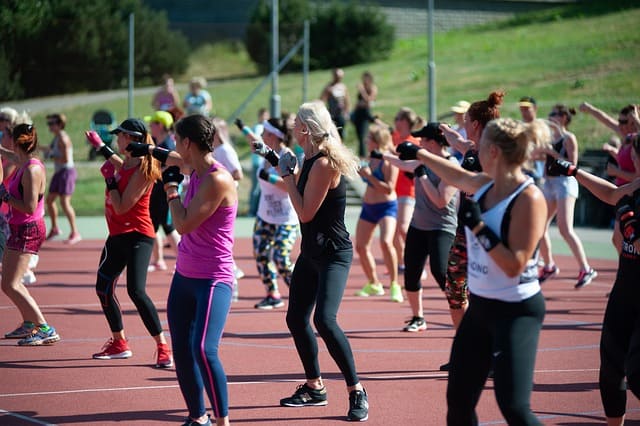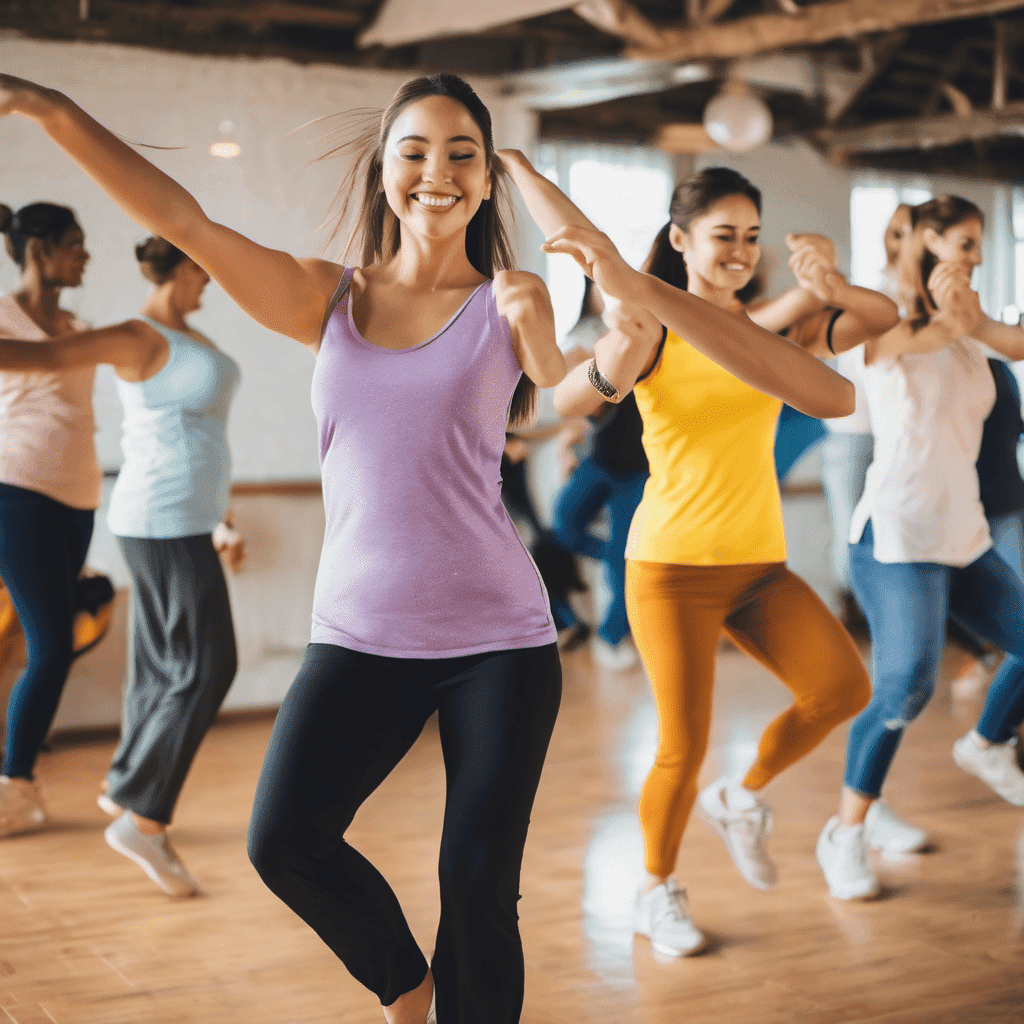Dance, beyond its undeniable allure as a form of artistic expression and cultural celebration, is rapidly gaining recognition as an exceptionally effective and enjoyable means of achieving weight loss and overall fitness. This rhythmic activity engages the entire body, developing cardiovascular endurance, muscle toning, and flexibility, while simultaneously serving as an active cardiovascular workout. Whether through high-energy styles like Zumba, salsa, or hip-hop, or the graceful moves of ballet and ballroom dance, individuals can burn calories, raise the heart rate, and shed extra pounds. Additionally, the sheer joy and engagement of dance often makes it a sustainable and enjoyable alternative to traditional exercise routines, appealing to a variety of individuals and skill levels. In this context, the combination of artistry and fitness not only transforms dance into a fascinating journey but also presents it as a comprehensive and effective tool for weight loss and achieving better health.
This article explores the various aspects of how dance can be an effective tool in achieving weight loss goals.
Calorie Burn and Cardiovascular Benefits:
The effectiveness of dance as a means of weight loss can be significantly attributed to its impressive calorie-burning ability and associated cardiovascular benefits. Engaging in dance, whether it’s the lively movements of a dance fitness class or the complex steps of a dance style like salsa or tango, demands the expenditure of a considerable amount of energy. The continuous and varied movements involved in dance work multiple muscle groups simultaneously, resulting in an elevated heart rate and increased oxygen consumption. This brisk cardiovascular activity not only helps in improving heart health but also plays an important role in burning calories.
Calories burned during dancing are affected by various factors such as dance style, intensity and duration of the session. High-energy dance forms such as hip-hop or aerobic dance classes can burn more calories than traditional aerobic exercises. For example, an hour of vigorous dancing can burn 400 to 600 calories or more, depending on factors such as body weight and intensity. The combination of aerobic and anaerobic elements in a dance routine not only burns calories during the activity, but can also lead to an “afterburn” effect, where the body continues to burn calories as it recovers after exercise.
Additionally, the cardiovascular benefits of dancing go beyond just burning calories. Regular participation in dancing can increase cardiovascular endurance, improve circulation and reduce the risk of heart disease. The rhythmic and repetitive nature of dance movements promotes efficient blood flow, which contributes to the overall cardiovascular health of individuals. This dual effect of calorie-burning and cardiovascular-boosting positions dance as a holistic and enjoyable approach to weight loss that goes beyond physical exertion, embracing the heart-healthy benefits of sustained rhythmic movement.
Full-Body Engagement:
One of the distinctive features that makes dance an effective and unique form of exercise is its inherent ability to engage the entire body. Unlike some fitness routines that isolate specific muscle groups, dance requires the coordination of different body parts, resulting in a full-body workout that contributes to overall health and wellness.
Let’s consider the details of how dance achieves this holistic engagement of the body.
-
- Rhythmic Footwork:
Dance often begins with the feet, and the intricate footwork associated with different dance styles serves as the foundation for full-body engagement. Whether it’s the quick steps of salsa, the precise foot placement of ballet, or the rhythmic foot patterns of hip-hop, the lower body is constantly in motion. This dynamic movement not only targets the leg muscles, but also activates the core and promotes balance and stability. - Basic Activation:
The core, consisting of the abdominal, lower back and pelvic muscles, plays an important role in maintaining posture, balance and overall stability during dance movements. As dancers twist, turn and perform various body movements, the core muscles are constantly engaged to provide support and control. Strengthening the core not only improves dance performance but also increases overall body strength and posture. - Arm movements and upper body work:
Dance involves a diverse range of arm movements, from elegant extensions in ballet to expressive gestures in contemporary dance. These movements not only add an aesthetic element to the dance but also engage the muscles of the arms, shoulders and upper back. As dancers move their arms in sync with their footwork and body movements, the upper body becomes an integral part of the dance routine, contributing to a comprehensive workout. - Movements of the spine:
Many dance styles involve dynamic movements of the spine, such as twists, arches, and turns. These movements not only add flair to the dance but also promote flexibility and strength in the spine and surrounding muscles. Spinal flexibility is vital to maintaining a healthy range of motion and preventing stiffness, making dance a great way to keep the entire back in good shape. - Involvement of small stabilizing muscles:
In addition to the larger muscle groups, dance engages smaller stabilizing muscles that are often neglected in more traditional forms of exercise. Constant shifts in weight, changes in direction, and different dance patterns activate these small muscles, promoting overall joint stability and preventing imbalances that can lead to injuries. - Total Physical Endurance:
Dance is not just about individual movements. It’s about consistency and routines that require endurance. The combination of cardiovascular activity, muscle engagement, and dynamic movements challenges the body’s endurance, promoting total body endurance. As dancers progress in their training, they develop the stamina needed to perform longer and more complex routines, improving overall fitness. - Integration of mind and body:
Apart from the physical aspect, dancing also involves mental engagement. Remembering the choreography, keeping in sync with the music, and maintaining proper form requires focus and concentration. This integration of mind and body enhances cognitive function and creates a complete fitness experience.
- Rhythmic Footwork:
Finally, whole-body engagement in dance is not just a byproduct; This is a fundamental aspect of this art form. The dynamic interplay of footwork, core activation, arm mobility, spinal flexibility, muscle stabilization engagement, and overall endurance make dance a comprehensive and fun way to achieve fitness goals while The joy of movement is embraced. Whether you’re an experienced dancer or a beginner, engaging the whole body in dance provides a way to make you healthier, stronger, and more balanced.
Also Read: Heart health Supplements
Variety and Enjoyment:
Dance stands out as a fitness activity not only for its physical benefits, but also for the unique combination of variety and enjoyment it brings to the exercise experience. Unlike traditional exercises that can become monotonous, dance offers a variety of styles, each with its own mood and rhythm. This variety, along with the sheer joy of movement, makes dance an attractive and sustainable way to achieve fitness goals.
Let’s explore in detail how diversity and fun are intertwined in the world of dance fitness.
-
- Different dance styles:
One of the main factors contributing to diversity in dance is the multitude of dance styles available. From the energetic and fast moves of hip-hop to the graceful and structured routines of ballet, individuals can choose a dance style that suits their personal preferences and fitness goals. Latin dances like salsa, traditional dances like ballroom, or contemporary styles offer a wide spectrum of options, ensuring that there is something for everyone. - Adaptation for different fitness levels:
Dance is inclusive, catering for people of all levels of fitness and experience. Beginners can start with simple routines and gradually progress to more challenging choreography as their skills and ability improve. This adaptability ensures that individuals of all fitness levels can find a dance style that suits them, promoting a sense of accomplishment and motivation to continue their fitness journey. - Fascinating Choreography:
Choreography in dance routines adds an element of creativity and mental stimulation to exercise. Learning and mastering a dance sequence requires focus and concentration, with physical benefits as well as mental exercise. The evolving nature of the choreography keeps the experience fresh and exciting, preventing the boredom often associated with repetitive exercise routines. - Music as a stimulus:
Dance is inseparable from music, and the rhythm, beat, and melody of the music enhance the overall enjoyment of the activity. Music has the power to lift mood, increase energy levels and move people. The combination of dance and music creates a multi-sensory experience that transcends the typical exercise environment, making dance a joyful and uplifting endeavor. - Group classes and social interaction:
Many people find motivation and enjoyment in group settings. Dance classes, whether in-person or virtual, offer a social and communal experience. Sharing the dance floor with others creates a sense of camaraderie, and the encouragement of fellow dancers can be a powerful motivator. The social aspect of dance adds a dimension of enjoyment that goes beyond the physical movements. - Cultural Research:
Dance provides an opportunity for cultural exploration, as many dance styles have deep cultural roots. Whether it’s exploring traditional dances from different regions or embracing contemporary expressions from the global dance community, individuals can gain insight into diverse cultures while staying active. This cultural richness adds depth and meaning to the dance experience. - Mind and Body Connection:
The joy derived from dancing is beyond the physical exertion. It involves a close connection between mind and body. As people immerse themselves in music and movement, they experience freedom and self-expression. This emotional and mental engagement enhances the overall enjoyment of the activity, making it a holistic and fulfilling experience.
- Different dance styles:
Finally, the variety and fun involved in dance makes it a great option for those looking for a sustainable and enjoyable fitness routine. The multitude of dance styles, adaptability to different fitness levels, captivating choreography, the motivational power of music, social interaction, cultural exploration, and the intimate mind-body connection collectively contribute to a fitness experience that transcends the traditional. So, whether you’re dancing to the rhythm of samba or swaying to the beats of hip-hop, the variety and enjoyment in dance is not only exercise but a celebration of movement and excitement.
Social Engagement:
Social engagement in dance adds a unique and invaluable dimension to the fitness experience. Unlike solitary exercise, dance often takes place in communal settings such as dance classes, social events, or even online platforms that foster a sense of camaraderie. A shared enthusiasm for movement creates a supportive environment where individuals encourage and motivate each other. Whether it’s partnering in a salsa class or participating in a group dance challenge, the social aspect encourages regular attendance and commitment to a fitness routine. This shared experience not only enhances the enjoyment of dance, but also creates lasting connections and a sense of belonging within the dance community. Exchanging motivation and positive energy on the dance floor contributes not only to physical fitness, but also to mental and emotional health, making social engagement an essential and rewarding aspect of the dance fitness journey.
Stress Reduction:
Stress reduction is a notable benefit that distinguishes dance as an effective means of promoting mental well-being. Engaging in dance, whether it’s the exhilarating rhythms of salsa, the expressive movements of contemporary dance, or the meditative rhythms of ballet, provides a therapeutic outlet for relieving stress and tension. The rhythmic and repetitive nature of dance movements can create a state of flow, where individuals become fully absorbed in the activity, distracting them from everyday stressors. As dancers immerse themselves in the music and choreography, the body’s natural mood-enhancing endorphins are released, leading to an immediate improvement in mood and reduction in stress levels.
Additionally, the focus required during dance serves as an exercise in mindfulness, promoting greater awareness of the present moment. This mindfulness practice helps individuals temporarily disconnect from the pressures of everyday life, providing a mental respite. The combination of physical activity, rhythmic harmony, and emotional expression involved in dance creates a holistic approach to stress reduction. Whether it’s meditative slow dance or the uplifting steps of a fast-paced routine, dance provides a therapeutic escape, allowing individuals to relax, reduce stress, and promote a positive mindset conducive to overall well-being. There is an opportunity. The joyful nature of dance not only relieves stress but also establishes a sustainable and enjoyable way to deal with life’s challenges.
Adaptability to Fitness Levels:
One of the remarkable qualities that makes dance a universally accessible and adaptable fitness option is its inherent flexibility to cater to individuals at different fitness levels. Whether you are a seasoned dancer or a complete beginner, the beauty of dance lies in its ability to adapt to individual abilities. Beginners can begin their dance journey with simple routines that focus on basic movements, gradually building strength, coordination and confidence. This adaptation is especially beneficial for those who may feel intimidated by more rigorous exercise regimens, as dance allows individuals to progress at their own pace, fostering a positive and inclusive environment.
As individuals progress in their dance training, they can explore more complex choreography and challenging routines, providing a continuous path for growth. Dance adaptation extends beyond physical fitness, encompassing a variety of styles and genres. From the rhythmic steps of ballroom to the dynamic and energetic nature of hip-hop, there are a variety of dance styles that accommodate different preferences and fitness goals. This adaptation not only ensures that individuals stay engaged and motivated throughout their fitness journey, but also promotes a sense of accomplishment as they witness improvements in their abilities and endurance over time. In essence, dance’s adaptability makes it a welcoming and sustainable option for individuals of all fitness backgrounds, encouraging a lifelong commitment to physical activity.
Consistency and Long-Term Commitment:
Consistency and long-term commitment are integral aspects of the dance fitness journey, setting dancing apart as a sustainable and enjoyable approach to maintaining a healthy lifestyle. Unlike crash diets or intense workout regimens that often lead to burnout, dancing offers individuals the opportunity to establish a consistent fitness routine that can be sustained over the long term. The joy and variety inherent in dancing make it more likely for individuals to adhere to their workout schedules, turning fitness from a chore into a pleasurable and habitual activity. The social aspect of dancing, whether participating in group classes or dance communities, fosters a supportive network that further encourages regular attendance, reinforcing the commitment to the fitness journey.
Moreover, the gradual progression in dance skill and physical fitness aligns with the principle of continuous improvement, motivating individuals to stay engaged over the long haul. As dancers witness their increased endurance, improved flexibility, and enhanced coordination, they develop a sense of achievement that fuels the desire to persist in their practice. The adaptability of dancing to different fitness levels allows individuals to navigate the inevitable fluctuations in energy and motivation, ensuring that they can sustain their commitment to fitness throughout various life stages. In essence, the combination of enjoyment, social support, and tangible progress makes dancing an ideal platform for fostering the consistency and long-term commitment necessary for achieving and maintaining a healthy lifestyle.
Also Read:
12 Workouts to Try in 2024
10 Effective Ab Exercises to Do at Home
Conclusion:
In conclusion, the multifaceted benefits of dancing render it a compelling and effective means of achieving weight loss while embracing a holistic approach to well-being. The dynamic interplay of full-body engagement, variety and enjoyment, social interaction, stress reduction, and adaptability to different fitness levels positions dancing as a versatile and sustainable fitness solution. Beyond the physical gains of calorie burn and muscle toning, dancing offers a joyous and culturally rich experience that transforms exercise from a routine obligation into a celebration of movement and vitality. The consistent engagement of diverse muscle groups, coupled with the mental and emotional well-being fostered by the art form, ensures that individuals not only shed pounds but also cultivate a positive and enduring relationship with their fitness journey. Dancing emerges not just as a means to attain a desired weight but as a transformative and enjoyable lifestyle choice that promotes health, happiness, and long-term well-being.
Remember, dancing is a joyful journey, not just a weight-loss tool. Embrace the fun, feel the music, and celebrate every step as you move towards a healthier, happier you!
FAQs about Dancing as a Weight Loss Tool:
Q: Can dancing really help me lose weight?
A: Absolutely! The calorie burn for various dance styles can be impressive, ranging from 140-200 calories per 30 minutes for slower dances like ballroom to 250-400+ for high-energy styles like Zumba or hip-hop.
Q: Does dancing build muscle?
Yes! Many dance styles engage multiple muscle groups, improving tone, strength, and endurance. This can further boost your metabolism and aid in weight management.
Q: Is dancing better than regular exercise?
A: It’s not “better,” but it can be more enjoyable and sustainable for some people. The fun factor and social aspect of dancing can keep you motivated and make exercise feel less like a chore.
Q: What type of dance is best for weight loss?
A: Choose something you enjoy! High-energy styles like Zumba, salsa, or hip-hop burn more calories, while ballroom or ballet offer a more graceful workout. Experiment and find your groove.
Q: I’m a beginner, is dancing too difficult?
Not at all! Many beginner-friendly classes and online tutorials cater to all levels. Start with basic steps and gradually build your skills and intensity.
Q: Do I need fancy equipment or a gym membership?
Nope! You can easily dance at home with free online videos or music. Comfortable clothes and sneakers are enough to get you started.
Q: Is diet still important when dancing for weight loss?
Yes! A healthy diet combined with exercise is key to sustainable weight loss. Focus on whole foods, fruits, vegetables, and lean protein while avoiding processed foods and sugary drinks.
Q: How often should I dance to see results?
Aim for at least 30 minutes of moderate-intensity dancing most days of the week. You can break it down into shorter sessions or mix in other exercises. Consistency is key.
Q: Will dancing guarantee weight loss?
Results vary based on individual factors like starting weight, intensity, and overall diet. However, dancing offers a fun and effective way to burn calories, build muscle, and improve overall fitness, contributing to weight management and a healthier lifestyle.
Q: Are there any health benefits of dancing besides weight loss?
Absolutely! Dancing improves coordination, flexibility, balance, and mood. It can also reduce stress, boost brain health, and enhance social interaction.
Q: Where can I find dance classes or beginner resources?
Check local gyms, community centers, dance studios, and online platforms like Youtube for beginner-friendly classes and tutorials. Don’t hesitate to explore different styles and find what gets you moving!








